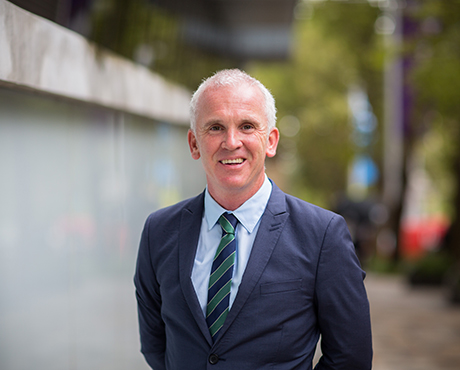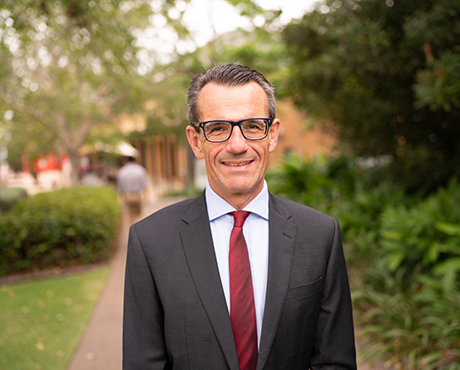
Include an additional SELT question
News 17 MayStaff can include an additional question in the Student Evaluation of Learning and Teaching (SELT) survey for units that are offered in Term 2 (Foundation Studies) (202334).
03 July 2015
Share

Brisbane Campus’s new John Paul II building uses high-tech design features to improve wellbeing for staff including carbon dioxide sensors that adjusts the amount of fresh air delivered into high-use areas such as teaching spaces maintaining excellent air-quality.
To further enhance the air quality, the carpets, paints, adhesives, sealants and furniture contain very low amounts of volatile organic compounds, which are associated with risk to workplace health and wellbeing. After hours, the building will purge its air mechanically, to remove built-up contaminants.
Staff and students also benefit from quiet air-conditioning, double-glazed windows, and artificial lights designed to minimise flicker – a frequent source of discomfort and headaches.
And these are rooms with a view with external views onto Brisbane’s extensive grounds available from more than 90 per cent of the usable floor space.
The official opening of the John Paul II building at Brisbane Campus welcomed another highly sustainable building into ACU’s portfolio, supporting the University’s ongoing commitment to reducing its environmental impact while promoting the wellbeing of students and staff who use the building.
The striking design by leading Australian architectural practice, Conrad Gargett, combines sustainable materials with smart technology to cut water and energy consumption well below that of a conventional building and deliver an indoor environment tailored to support the productivity and health of the occupants.
Early in the building’s design stage, ACU’s Properties Directorate and the architects identified the need to deliver a building that contained not only high-quality teaching and administrative spaces, but that could also operate efficiently and reliably in Brisbane’s year-round heat and humidity.
The only way to control the impact of that heat and humidity on the campus’s many mid-century buildings is with air-conditioning and plenty of it, which is why Brisbane campus has ACU’s lowest energy-efficiency.
The John Paul II building changes all of that, beginning with the glass façade. The highly reflective glass functions as a buffer to the sun’s rays to limit the amount of heat that radiates into the building and cutting the sun’s glare for occupants. To manage the heat that inevitably enters the building, highly efficient chillers and fans drive the air-conditioning.
Meanwhile, the lights in the John Paul II building use minimal power and are linked to motion sensors that switch off lights in rooms that are unoccupied.
To building also has water tanks that collect rain water syphoned from the roof, for use in irrigation of the surrounding gardens and for toilet flushing. And the toilets and taps throughout are among the most efficient available on the market.

Staff can include an additional question in the Student Evaluation of Learning and Teaching (SELT) survey for units that are offered in Term 2 (Foundation Studies) (202334).

Read a summary of the Academic Board meeting held on 12 April 2023.

The university takes academic misconduct very seriously. For a student, receiving an academic misconduct allegation letter can be highly stressful. Support is available.

Read the latest on the MFA for Students rollout.

If you are considering applying for promotion, come along to an upcoming information session – Understanding the New Academic Promotions Process.

ACU Co-Lab is proud to unveil its latest commercialisation program, Translate to Innovate Series, a specialised program targeting ACU’s research community.

A message from Executive Dean of Theology and Philosophy Professor Dermot Nestor: Purpose is what defines a Catholic university and galvanises the people who work within it.

See the TechOne P2P work instruction videos and modern slavery training modules which have been created to help grow your understanding of the subject matter, your responsibilities and the processes i...

A recording of last week’s Global Learning Showcase is now available to view if you were unable to attend. See what you may have missed.

Do you implement innovative strategies in your teaching that motivate and inspire students to learn? Receive recognition for your efforts by applying for an ACU Citation or VC Teaching Award.

Promotion recognises and rewards an academic’s achievements at their current level of appointment that warrant promotion to the next academic level. This year’s round marks a significant shift in the ...

A message from Executive Dean of Law and Business Professor Andrew O’Neil: I am committed to ACU’s continued success, with a contribution that places a premium on impact and growth.

Stay informed on recent changes to the Procurement Policy, approvals for purchases, how to raise mandatory purchase orders and related knowledge base articles.

As of Monday 8 May, Service Central phone support hours have changed to 9am–5pm AEST. Live chat remains available between 9am–5pm AEST.

You’re invited to attend local morning or afternoon tea events at the following local campuses hosted by the ACU ALLY Network, with the support of the Campus Deans and campus LGBTIQA+ Student Societie...

ACU’s business incubator, Co-Lab is delighted to announce details of its 2023 Circular Economy Incubator Series, designed for people and businesses with principles and practices of circular economics...

Do you have innovative ideas for program and curriculum development or initiatives to enhance student learning experiences that would benefit from funding? CEI has launched Teaching Development Grants...

Attend an online showcase to meet the Global Learning team, gain useful advice and find out how our various learning and engagement programs are developed and managed.

A message from Interim Provost Professor Meg Stuart: A unique new program for first year students is improving student retention at ACU.

Register for a webinar presented by the ACEN on the Graduate Outcomes Survey, focusing on a three-year evaluation of student participation in Work Integrated Learning.
Visit Service Central to access Corporate Services.